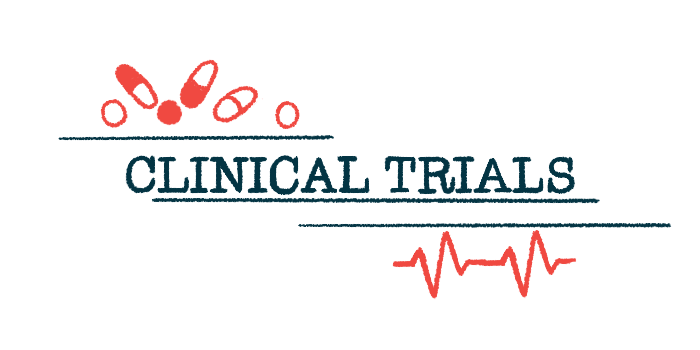Most benefit of RSLV-132 seen in patients with more active SLE
Therapy failed to lessen skin damage but eased general symptoms in trial
Written by |

Treatment with RSLV-132 failed to lessen the severity and visible damage caused by skin lesions in people with systemic lupus erythematosus (SLE) in a Phase 2 clinical trial. But the experimental RNA-digesting enzyme did tend to ease general symptoms in patients with more active SLE.
That’s according to data from that clinical trial (NCT02660944), which tested how well RSLV-132 works versus a placebo when given every other week as an intravenous or into-the-vein infusion, for about six months, to treat moderate to severe skin lesions.
Calling the study “informative,” the researchers say “the results warrant further larger studies in patients with active systemic disease.”
“Continued development of RSLV-132 may provide a new therapeutic that can be added to the standard of care in SLE,” the team, led by James Posada, PhD, wrote. Posada is the CEO at Resolve Therapeutics, the company developing RSLV-132.
The findings were reported in a study titled “Evaluation of RNase therapy in systemic lupus erythematosus: a randomised phase 2a clinical trial of RSLV-132,” published in the journal Lupus Science & Medicine.
Trial had sought to find treatment to lessen damage from skin lesions
RSLV-132 is an enzyme that digests RNA — the molecule best known for its role in translating information found within DNA into protein-assembly instructions.
Besides existing inside cells, RNA also can travel outside cells to tissues around the body. When this happens, it is called extracellular RNA.
In SLE and other autoimmune diseases like Sjögren’s syndrome, white blood cells in the body’s immune system produce autoantibodies against nucleic acids and their binding proteins. Both DNA and RNA are nucleic acids.
RNA-binding proteins help keep extracellular RNA in circulation. When extracellular RNA is detected by the immune system, it triggers a signaling cascade that results in the production of inflammatory type I interferons, which researchers called “one of the hallmarks of SLE.”
“Mounting evidence substantiates the importance of extracellular RNA as a drug target in autoimmune diseases such as SLE and Sjögren’s,” Posada said in a company press release. This led Resolve to explore the clinical potential of RSLV-132 in a proof-of-concept study.
RSLV-132 combines an RNAse, an enzyme that digests or breaks down RNA, with the Fc region of human IgG1, the main type of antibodies found in the blood. Breaking down extracellular RNA is expected to stop the immune system from reacting to it as if it were harmful, thereby reducing inflammation and easing symptoms of SLE.
The study included 64 adults with SLE, with a mean age of 45, who had moderate to severe skin disease based on a score of 10 or more on the Cutaneous Lupus Erythematosus Disease Area and Severity Index (CLASI) — a measure of disease activity and damage. All had autoantibodies against RNA-binding proteins.
The patients were randomly assigned to receive 13 intravenous infusions containing either 10 mg/kg of RSLV-132 or a placebo. The three first doses were infused with a one-week interval and the following 10 every other week. Altogether, just more than half of the patients — 25 or 56% in the RSLV-132 group and 12 or 56% in the placebo group — completed the study.
The main goal of the trial was to see how the CLASI score changed from the study’s start to day 169 — a period of almost six months. The total CLASI score represents the sum of disease activity and damage scores and ranges from zero to 70 points, with a higher score indicating more severe skin manifestations.
Mean CLASI scores dropped by 6.2 points in the RSLV-132 group and by 5.7 points in the placebo group. There was no significant difference between the two groups, meaning that RSLV-132 failed to lessen the severity and visible damage caused by skin lesions.
Study ‘highlighted’ target population likely to benefit from RSLV-132
However, when researchers looked at specific subgroups of patients with more severe systemic disease activity — meaning symptoms affecting the entire body and not just the skin — they found that those treated with RSLV-132 had better responses.
Specifically, the team focused on patients scoring nine points or more at the study’s start on the SLE Disease Activity Index 2000 (SLEDAI-2K). They found a higher proportion of responders according to the BICLA (62% vs. 44%) and the SRI-4 (23% vs. 11%) criteria among those who had been treated with RSLV-132 versus the placebo.
Both the BICLA — that British Isles Lupus Assessment Group-Based Composite Lupus Assessment — and the SLE Responder Index 4, known simply as SRI-4, are composite measures of treatment response based on scoring tools such as the SLEDAI-2K.
Patients who at the study’s start scored 21 points or more in the CLASI also had had a higher proportion of responders in the BICLA (28% vs. 8%) and the SRI-4 (39% vs. 8%) if they had been treated with RSLV-132 versus a placebo.
RSLV-132 had an excellent safety profile in this study and demonstrated a trend towards efficacy in patients with more active systemic disease.
“Our study demonstrates the potential benefit of digesting circulating pathogenic [disease-causing] RNA in selected SLE patients with active systemic disease and circulating RNA-containing autoantibodies,” Posada said.
Side effects were about as frequent in the RSLV-132 group as in the placebo group. One patient in the RSLV-132 group left the study due to a serious loss of sensation. Six more stopped treatment due to side effects like chest pain, itching, and a rash.
Overall, according to the researchers, the study “highlighted the population of patients with SLE for whom RSLV-132 is most likely to be of clinical benefit.”
“RSLV-132 had an excellent safety profile in this study and demonstrated a trend towards efficacy in patients with more active systemic disease,” they concluded.







